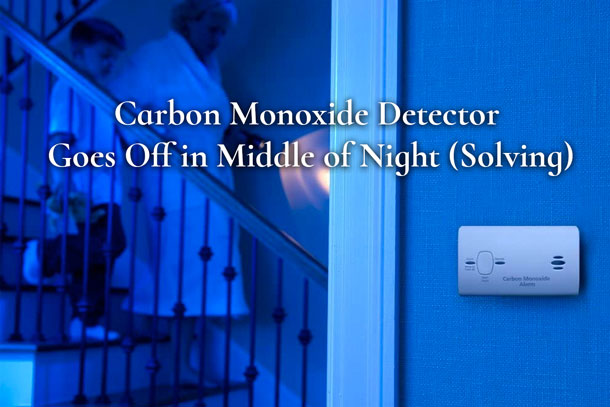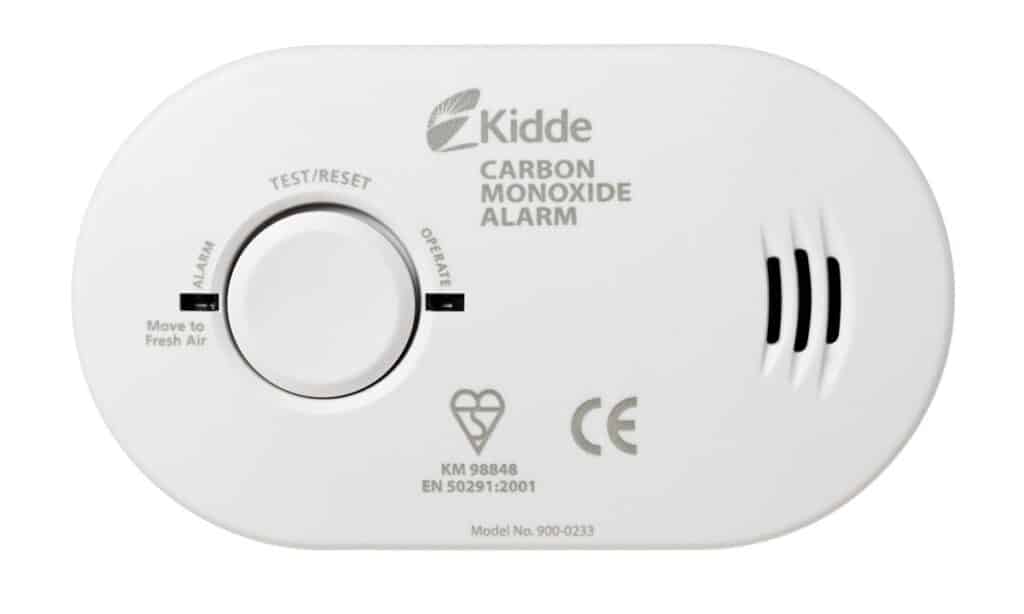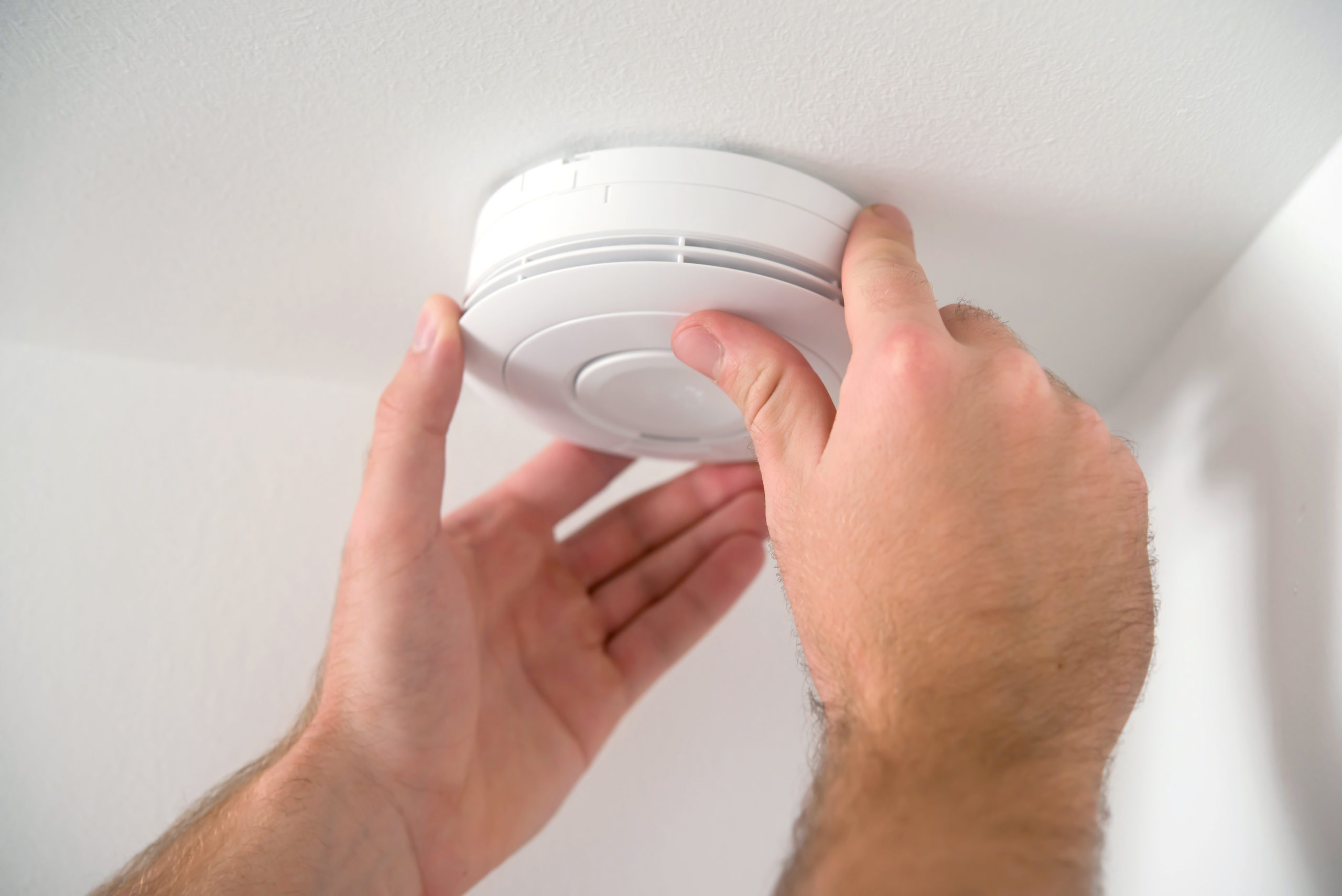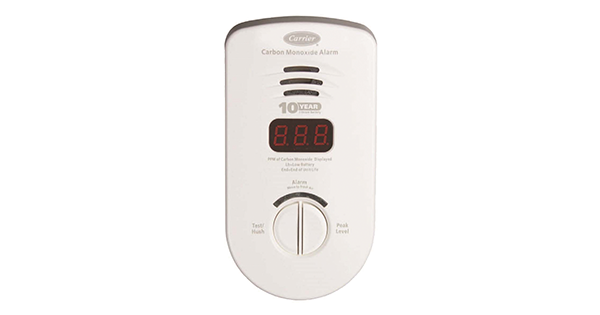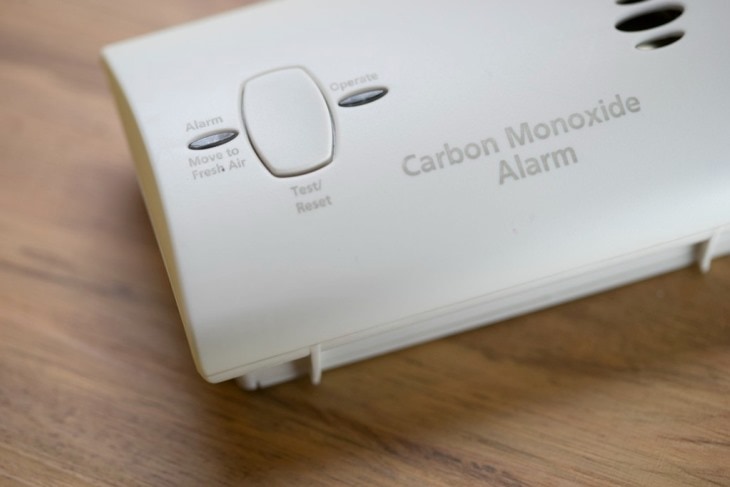If The Carbon Monoxide Detector Goes Off

What To Do When Your Carbon Monoxide Detector Alarms: A Comprehensive Guide for Homeowners
A carbon monoxide (CO) detector sounding an alarm is a serious event demanding immediate attention. Whether you're a homeowner considering a new HVAC system or a real estate investor evaluating a property, understanding the causes, dangers, and proper response to a CO alarm is crucial for safety. This guide provides a detailed overview of what to do when your CO detector goes off, the potential causes, and how to prevent future occurrences, particularly in relation to your heating and cooling systems.
Immediate Actions When the Alarm Sounds
Your immediate response can make a life-or-death difference. Here’s a step-by-step guide:
- Evacuate Immediately: Do not hesitate. Get everyone out of the house, including pets. Do not stop to open windows or investigate. Your priority is to reach fresh air.
- Call 911 or Your Local Fire Department From Outside: Once you are safely outside, call emergency services. Inform them about the CO alarm and that you have evacuated. Provide your address and any relevant details.
- Do Not Re-enter: Wait for emergency responders to arrive and clear the building. They have the equipment to detect and measure CO levels safely. Do not attempt to re-enter the building under any circumstances until they give you the all-clear.
- Seek Medical Attention if Necessary: If anyone experiences symptoms of CO poisoning – headache, dizziness, nausea, vomiting, chest pain, confusion – seek immediate medical attention. Even if symptoms seem mild, it's best to get checked out by a medical professional.
Understanding Carbon Monoxide and Its Sources
Carbon monoxide is an odorless, colorless gas produced by the incomplete combustion of fuels such as natural gas, propane, oil, wood, and kerosene. Common sources of CO in a home include:
- Furnaces: A malfunctioning furnace is a primary source of CO leaks, especially if it's not properly maintained.
- Water Heaters: Gas-powered water heaters can also produce CO if they aren't functioning correctly.
- Fireplaces: Improperly ventilated or maintained fireplaces can release CO into the home.
- Gas Stoves and Ovens: While designed for cooking, these appliances can release CO if not properly ventilated.
- Portable Generators: Never use a generator indoors or in an enclosed space. Generators produce a significant amount of CO.
- Cars: Never run a car inside a garage, even with the door open. CO can quickly build up to dangerous levels.
HVAC Systems and Carbon Monoxide: What You Need to Know
Your HVAC system, particularly your furnace, is a critical area to monitor for potential CO leaks. Here’s what to consider:
Furnace Inspection and Maintenance
Regular furnace maintenance is essential to prevent CO leaks. A qualified HVAC technician should inspect your furnace annually. This inspection should include:
- Checking the Heat Exchanger: The heat exchanger is a critical component. Cracks or corrosion can allow CO to leak into your home.
- Inspecting the Flue Pipe: The flue pipe vents exhaust gases, including CO, outside. It must be properly connected and free of obstructions.
- Cleaning the Burners: Clean burners ensure efficient combustion and reduce the risk of CO production.
- Testing for CO Leaks: Technicians use specialized equipment to detect CO leaks in the furnace and surrounding area.
Consider upgrading to a high-efficiency furnace. These furnaces typically have better seals and combustion efficiency, reducing the risk of CO leaks. Look for models with high AFUE (Annual Fuel Utilization Efficiency) ratings, indicating greater energy efficiency. For example, the Carrier Infinity 98 Furnace boasts up to 98.5% AFUE.
Water Heater Safety
Like furnaces, gas-powered water heaters require regular maintenance to prevent CO leaks. Have your water heater inspected annually by a qualified plumber or HVAC technician.
The Role of Ventilation
Proper ventilation is crucial for preventing CO buildup. Ensure that all fuel-burning appliances are properly ventilated to the outside. Avoid blocking or covering vents.
Consider installing a whole-house ventilation system to improve air quality and reduce the risk of CO buildup. These systems circulate fresh air throughout the home, diluting any potential CO leaks.
Carbon Monoxide Detectors: Placement and Maintenance
Having working CO detectors is your first line of defense against CO poisoning. Here are some key considerations:
Placement
- Install Detectors on Every Level: Place CO detectors on every level of your home, including the basement.
- Near Sleeping Areas: Install detectors outside sleeping areas so you can hear the alarm while you sleep.
- Follow Manufacturer Instructions: Carefully follow the manufacturer's instructions for placement and installation.
- Avoid Obstructions: Do not place detectors behind furniture or curtains, as this can obstruct airflow and reduce their effectiveness.
Maintenance
- Test Regularly: Test your CO detectors monthly to ensure they are working properly. Most detectors have a test button.
- Replace Batteries Annually: Replace the batteries in your CO detectors at least once a year, even if they seem to be working. A good practice is to replace them when you change your clocks for daylight saving time.
- Replace Detectors Every 5-7 Years: CO detectors have a limited lifespan. Replace them every 5-7 years, or according to the manufacturer's recommendations.
Consider upgrading to smart CO detectors that connect to your home's Wi-Fi network. These detectors can send alerts to your smartphone if CO is detected, even when you're away from home. Some popular brands include Nest Protect and First Alert Onelink.
Preventative Measures and System Upgrades
Taking proactive steps can significantly reduce the risk of CO poisoning. Here are some measures to consider:
Regular HVAC Maintenance
Schedule annual maintenance for your furnace, water heater, and other fuel-burning appliances. A qualified HVAC technician can identify and address potential issues before they become dangerous.
Upgrade to Energy-Efficient Appliances
Consider upgrading to energy-efficient appliances with advanced safety features. These appliances are often designed with better seals and combustion efficiency, reducing the risk of CO leaks. For example, tankless water heaters, like those from Rinnai, only heat water when you need it, reducing standby heat loss and potential CO emissions.
Install a Whole-House CO Monitoring System
A whole-house CO monitoring system provides continuous monitoring throughout your home and can alert you to CO leaks even if you're not near a specific detector. These systems are typically professionally installed and monitored.
Consider an Electric HVAC System
If you are replacing your HVAC system, consider switching to an all-electric system, such as a heat pump. Heat pumps don't burn fossil fuels and therefore don't produce CO. Look for models with high SEER (Seasonal Energy Efficiency Ratio) and HSPF (Heating Seasonal Performance Factor) ratings for optimal efficiency. Brands like Mitsubishi Electric and Daikin offer excellent heat pump options.
Understanding HVAC Warranties and Maintenance Contracts
When purchasing a new HVAC system, carefully review the warranty terms and consider purchasing a maintenance contract. Warranties typically cover defects in materials and workmanship, while maintenance contracts provide ongoing maintenance and repairs. Look for extended warranties that offer comprehensive coverage for several years. For example, Trane offers limited warranties that can extend up to 10 years on certain components.
Comparing HVAC Brands and Models
Choosing the right HVAC system is a significant investment. Research different brands and models to find the best fit for your needs and budget. Consider factors such as energy efficiency, reliability, and warranty coverage.
Here’s a brief comparison of some popular HVAC brands:
- Carrier: Known for innovation and high-efficiency systems. Offers a wide range of furnaces, air conditioners, and heat pumps.
- Trane: Renowned for durability and reliability. Offers a variety of systems with advanced features.
- Lennox: A leader in energy-efficient technology. Offers some of the quietest and most efficient HVAC systems on the market.
- Goodman: A budget-friendly option offering reliable performance. Offers a good value for the price.
- Rheem: Offers a wide range of HVAC and water heating products. Known for innovation and energy efficiency.
When comparing models, pay attention to the SEER, AFUE, and HSPF ratings. Higher ratings indicate greater energy efficiency, which can save you money on your energy bills. For instance, a central air conditioner with a SEER rating of 18 or higher is considered highly efficient.
Conclusion
A carbon monoxide detector alarm is a warning sign that should never be ignored. By understanding the potential sources of CO, taking preventative measures, and knowing how to respond to an alarm, you can protect yourself and your family from the dangers of CO poisoning. Whether you are replacing your HVAC system or simply maintaining your existing equipment, prioritize safety and ensure that your home is equipped with working CO detectors. Regular HVAC maintenance, combined with reliable CO detection, is vital for a healthy and safe home environment. Don't forget the importance of reading product manuals, registering your products with the manufacturer, and keeping records of all maintenance performed. These practices will help maintain the integrity of your systems and make warranty claims easier if needed.

